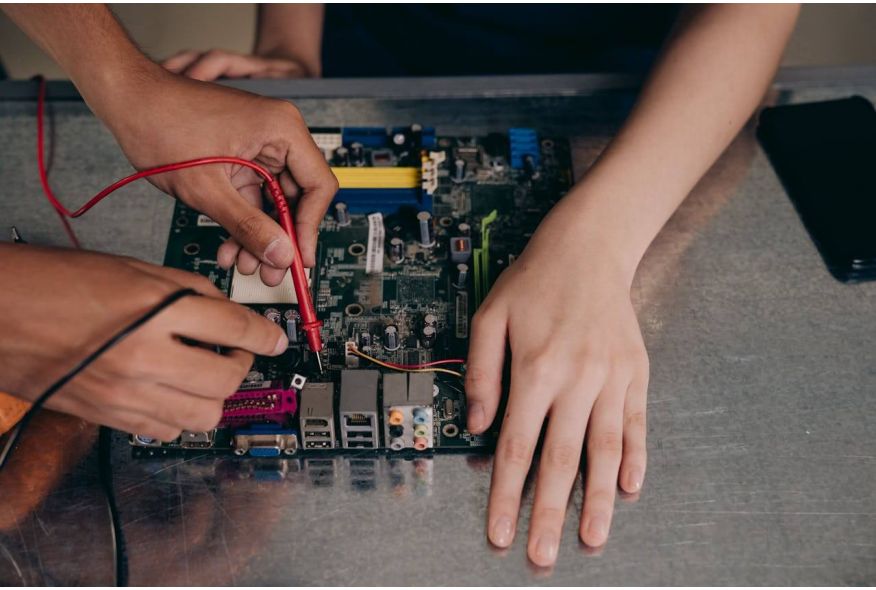What to Do When Your PC Won’t Turn On: A Diagnostic Guide
Few things are more frustrating than pressing the power button on your PC and getting no response. Whether you’re working on an important project or gaming, a dead PC can feel like a disaster. But don’t panic! In most cases, the issue is fixable. In this guide, we’ll walk you through step-by-step diagnostics to identify and resolve the problem.
Step 1: Check Basic Power Connections
Before diving into complex troubleshooting, start with these basic checks:
Power Cable: Ensure the power cable is securely connected to both the PC and the wall outlet.
Power Strip/Surge Protector: Test the outlet by plugging in another device (e.g., a lamp). If it doesn’t work, try a different outlet.
Power Switch: Verify the power supply’s (PSU) switch on the back of the PC is set to “On” (I).
Step 2: Listen for Signs of Life
When you press the power button, listen and look for:
Fans Spinning: If fans spin but the PC doesn’t boot, the issue might be with the motherboard, RAM, or GPU.
Beep Codes: Some motherboards emit beep codes to indicate specific errors (check your motherboard manual).
Lights: Check if any LED indicators on the motherboard or GPU light up.
No signs of life? The problem could be with the power supply, motherboard, or power button.
Step 3: Test the Power Supply (PSU)
A faulty PSU is a common culprit. Here’s how to test it:
Paperclip Test:
Unplug the PSU from all components.
Bend a paperclip into a U-shape and insert one end into the green wire pin (PSU_ON) and the other into any black wire pin (ground) on the 24-pin motherboard connector.
Plug in the PSU and turn it on. If the PSU fan spins, it’s likely working.
Replace the PSU: If the PSU fails the test, replace it with a known working unit.
Step 4: Check Internal Hardware
If the PSU is working but the PC still won’t boot, inspect internal components:
Reseat Components:
Remove and reinsert the RAM, GPU, and power cables. Loose connections can prevent booting.
Test the RAM:
Try booting with one RAM stick at a time. If one stick fails, replace it.
Check the Motherboard:
Look for swollen capacitors, burn marks, or damaged pins.
Reset the CMOS by removing the motherboard battery for 5 minutes or using the CMOS jumper.
Test the GPU:
If your CPU has integrated graphics, remove the GPU and connect the monitor to the motherboard.
Step 5: Diagnose the Power Button
A faulty power button can prevent your PC from turning on:
Bypass the Button:
Locate the power switch pins on the motherboard (refer to the manual).
Use a screwdriver to short the pins momentarily. If the PC turns on, replace the power button.
Step 6: Check for Overheating or Short Circuits
Overheating: If the PC shuts down immediately, overheating could be the cause. Clean dust from fans and heatsinks.
Short Circuits: Ensure no loose screws or metal objects are touching the motherboard.
Step 7: Test with Minimal Hardware
Disconnect non-essential components (e.g., HDDs, RGB lighting) and try booting with only:
Motherboard
CPU + cooler
1 RAM stick
PSU
If the PC boots, reconnect components one by one to identify the faulty part.
Step 8: When to Seek Professional Help
If none of the above steps work, the issue might be with the motherboard or CPU. Consider:
Professional Repair: A technician can diagnose hardware faults with specialized tools.
Warranty Claims: If your PC or components are under warranty, contact the manufacturer.
Common Mistakes to Avoid
Ignoring Obvious Fixes: Double-check cables and connections before assuming the worst.
Skipping the CMOS Reset: This often resolves BIOS-related issues.
Handling Components Carelessly: Always ground yourself to avoid static damage.
Final Thoughts
A PC that won’t turn on can be stressful, but most issues are solvable with patience and systematic troubleshooting. By following this guide, you’ll likely identify the problem and get your system back up and running.
Remember, regular maintenance (like cleaning dust and updating drivers) can prevent many issues before they start.
Reminder:
Found this guide helpful? Share it with your friends and fellow PC users on social media! Let’s help everyone troubleshoot their tech woes. 🚀
By following these steps, you’ll be able to diagnose and resolve most common issues causing your PC to not turn on. Happy troubleshooting!







